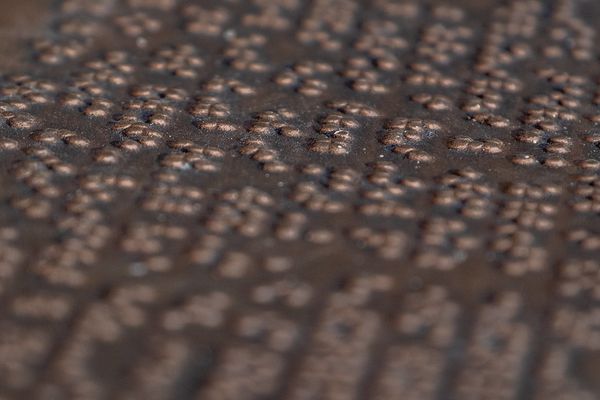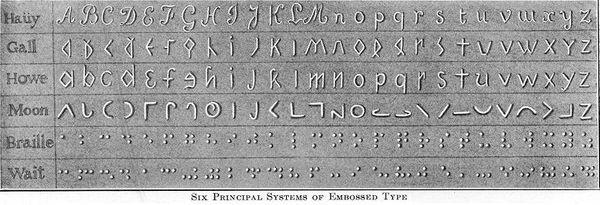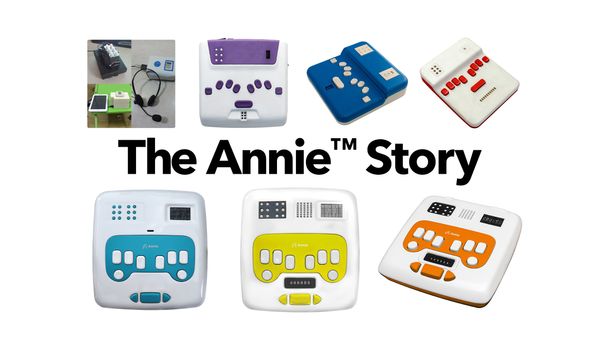How Thinkerbell Labs Set Up India’s First Braille Smart Class in Ranchi
Every story has a turning point. For Annie and its unique place in Braille learning, one of the most important points early in its story was the Annie Smart Class at Rajyakrit Netrahin Madhya Vidyalaya, a blind school in Ranchi, Jharkhand - India’s first Braille Smart Class, set up in July 2018. This was Thinkerbell Labs’ first major deployment of the Annie learning ecosystem - a trial by fire for our tech, and the partnerships we believed in would bring innovative education to the ones who could benefit from it the most.
The Ranchi Annie Smart Class, or ASC, turned out to be a tremendous success. The students and teachers were immediately taken with the Annies, and the technological innovation has had a marked impact on Braille learning. We’ve set up several more such classrooms since, but many of our product, logistical, and operational processes have been influenced by the lessons we learned there. Annie as a means to improved Braille learning and an ecosystem came into its own here.
Kickstarting the Classroom
Annie was launched worldwide in 2018, and quickly gathered acclaim from a number of outlets and platforms. When Thinkerbell Labs won at the INFOCOM Future Leadership Awards 2017, we were approached by an official from the Government of Jharkhand who, impressed with Annie, invited us to set up India’s first Braille smart class in Ranchi. Through this, we established a partnership with the then-DC for Ranchi, Rai Mahimapat Ray, who was enthusiastic about Annie’s potential to improve the quality of education for children with visual impairments. Having worked with the District Administration to identify the blind school that would be our first Annie partnership, we were ready to make our first Annie Smart Class the benchmark for Braille learning in India.
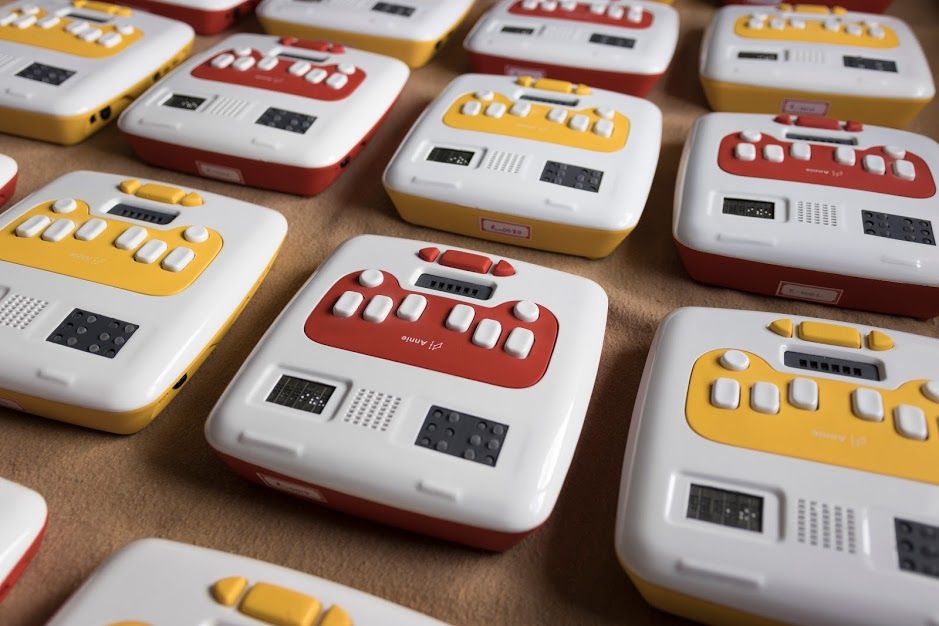
Our work on the Ranchi ASC began with understanding the specific conditions of the blind school, and how Annie would best serve the needs of the students and teachers there. Simultaneously, in these early days of Thinkerbell Labs, we were learning how we would need to adapt to the demands of our work on the fly. It was important to the team to be agile and conscientious, aware of the challenges we’d have to overcome while centering our partners in the school and district administration.
In Preparation for India’s First Braille Smart Class
At Thinkerbell Labs, we believe that students must be partners in their learning. At the Ranchi ASC, this meant a close understanding of how to make Braille learning appealing to these young children. It was important for Annie to communicate with them in familiar ways - so alongside English Braille learning material, we developed the content in Hindi, as well as material to teach them the English alphabet through audio-based Hindi instructions. The learning materials and instructions incorporated stories, music and sounds that offered a more informal learning environment for the young learner, while also being designed for these learners to better their skills in specific facets of Braille, like reading, typing, and writing. This principle extended to the gamified lessons we’d developed, with leaderboards that let the children have a friendly sense of competition. This eventually led to a huge spike in Annie interest and use.
At the same time, we understood that Annie needed to work as a guided companion for the learner. To reduce the complexity of having to navigate a new system, we built linearity into the lessons to start with, and as the students got more comfortable with Annie, they had the option to choose what they wanted to learn and how. We also added little touches to make the Annies student-friendly and familiar as a teacher, such as adding a welcome message that would say their name in their teacher’s voice. Many of the lessons we learnt here became key to the success of future ASCs, spearheaded by the Learning Experience, or LEX team that was eventually established within our company.

There were also elements of the Annie ecosystem developed specifically for the Ranchi Annie Smart Class that have since become standard features. The login system, for example, was designed so the many students that had access to the Annies in the classroom could login to any device at any time and have a personalized experience, with records of their progress and such. To ensure that this connectivity was smoothly integrated into the ASC without needing to rely on the unsteady internet connectivity, we set up a local server which would connect to the Annies within the classroom. Helios, the performance tracking suite for the Annie Smart Class, was also developed at record speeds so we could have a comprehensive tool for teachers to support the learning happening in the ASC.
To make all of this happen, we were working overtime - developing and finalizing content with experts, recording it with a voiceover artist, encoding the content onto Annie and preparing it all for the ASC to be set up in time. The making of the Annies themselves, from assembly to the deployment, was a learning experience for us too, ably supported by our partners at the school and administration. The team fondly remembers those days as a formative experience for the company, a highlight that established the strong bonds among them.
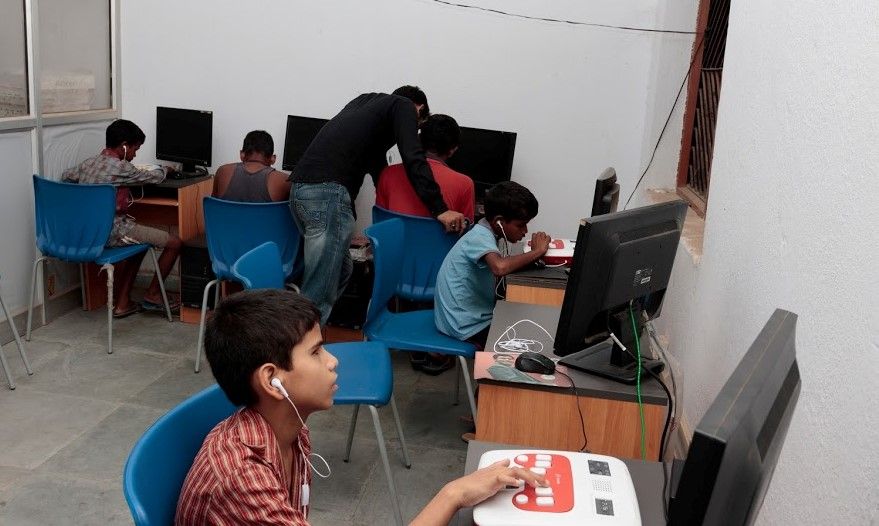
These experiences shaped much of how Thinkerbell Labs itself operates. Until the Ranchi ASC, Annie had only been deployed in “sandboxes” and test scenarios, so adapting it to a real-world setting was a huge change. For example, the geographical distance between the school and the company office meant updates to the Annies’ content and software would have to be done ‘over the air,’ i.e., through the internet - capability that the team quickly built so the ASC would be comprehensively equipped to stay up to date with our developments. Even with the pressures of time, though, the team always prioritized the quality of what we built - not just in the essentials but in every facet that made Annie what it is, down to the glossy finish of the device’s exterior. Everyone in the company - across teams - got their hands dirty in building Annie, getting to understand the nuts and bolts, the ins and outs of the electronics and hardware components of Annie.This grew to be a huge strength of the company, as anyone on any team could pick apart, build and debug an Annie.
The run up to the setting Ranchi ASC deployment set us on a progressive path for how the entire company worked. It elevated our sense of professionalism, structure, internal and external accountability, and set us on a path of rigorous learning and self-improvement. We developed well-structured methods to set up Annie Smart Classes and ensure their smooth functioning. We learnt how to pass on the individual knowledge of team members to each other, as well as to our partners in the school, primarily the teachers. As the days to the final deployment of the Annie Smart Class and its accompanying ecosystem at Ranchi drew near, we knew we had something truly great on our hands.
At Ranchi
Setting up the Ranchi Annie Smart Class on the ground involved several of our partners. From the school, the headmaster, Mr. Rauvish, a visually impaired teacher, Mr. Ramesh, and the teacher who guided the students’ interactions with computers, Mr. Manish worked closely with our team. We also had the backing throughout the deployment of the DC and his team. Working together, we focused on those who were most important to the success of our work: the students.

The students - and the teachers - loved Annie, introduced by Mr. Manish as the students’ new teacher. For everyone involved in the deployment, it was a moment of real pride to share in the learner’s exploration of Annie, the lessons and the games, the collaboration and competition we were hoping would shine through in this Braille smart class. Many from the first batch of students who got to use Annie helped those who came after them learn with their Annies. Excited by the chance to get on the leaderboards, the children couldn’t keep away from long sessions with the games - each point on Whack-a-Braille, each letter spelt in Letter Race refining their skills in various forms of engagement with Braille. With our partners in learning, we had set up India’s first Annie Smart Class - a leap forward in how Braille could be taught and learnt. As our CEO and co-founder, Sanskriti recollects, this was a moment of triumph - put into words by a teacher at the school: “Ranchi jaise sheher mein London jaisi technology (In a city like Ranchi, we now have technology like London’s).”
In the Days (and Years) that Followed
The Annie Smart Class at Ranchi was a validation of Thinkerbell Labs’ mission, of building means to social inclusion for children with visual impairments through technology-enabled Braille learning. Through Helios, the performance tracking suite, we witnessed the everyday use and progressive betterment of the children’s Braille skills. The principles of inclusive design that we had adopted had demonstrable significance in how technology could be used. We had risen to the challenge of building this ecosystem of education that was unlike anything else made for visually impaired children.

As it turned out, enrollment in the blind school at Ranchi increased after we’d set up the Annie Smart Class, as people from nearby villages started sending their children to the school hearing about the ASC, thinking, as Sanskriti narrates, that “bachcha kuch technology seekhega kuch banega.” Thinking back, Dilip Ramesh, our co-founder and CTO, notes that working on this first smart class “felt like the beginning of something great.” Clearly, it was.

